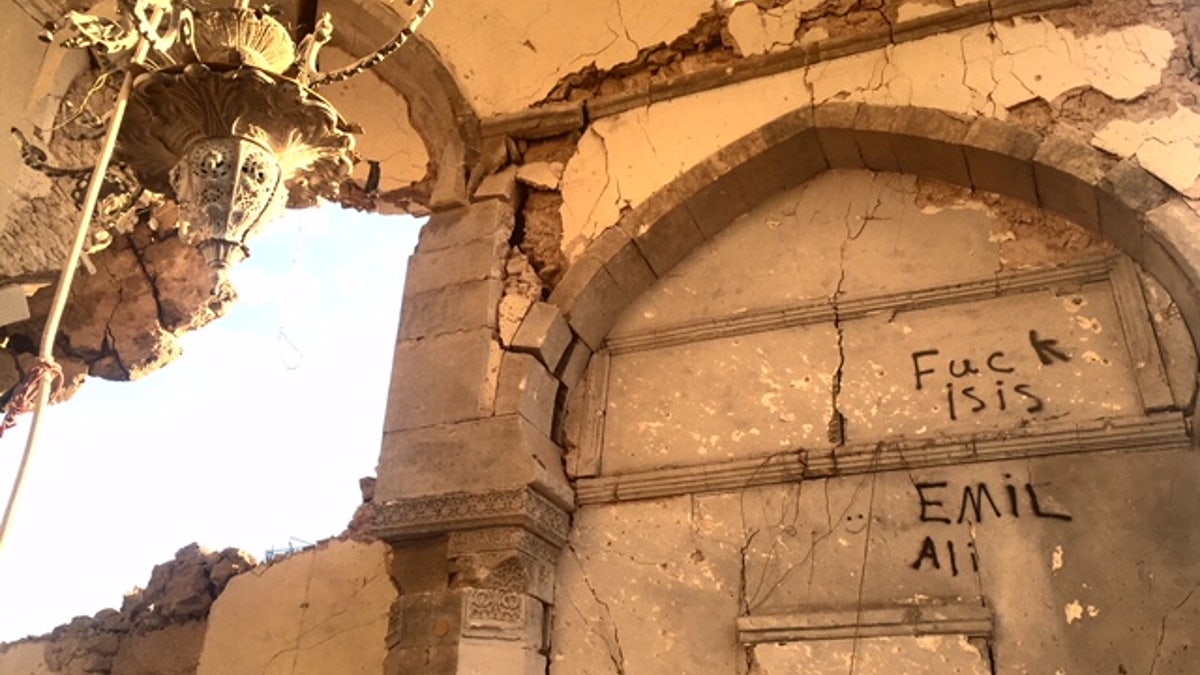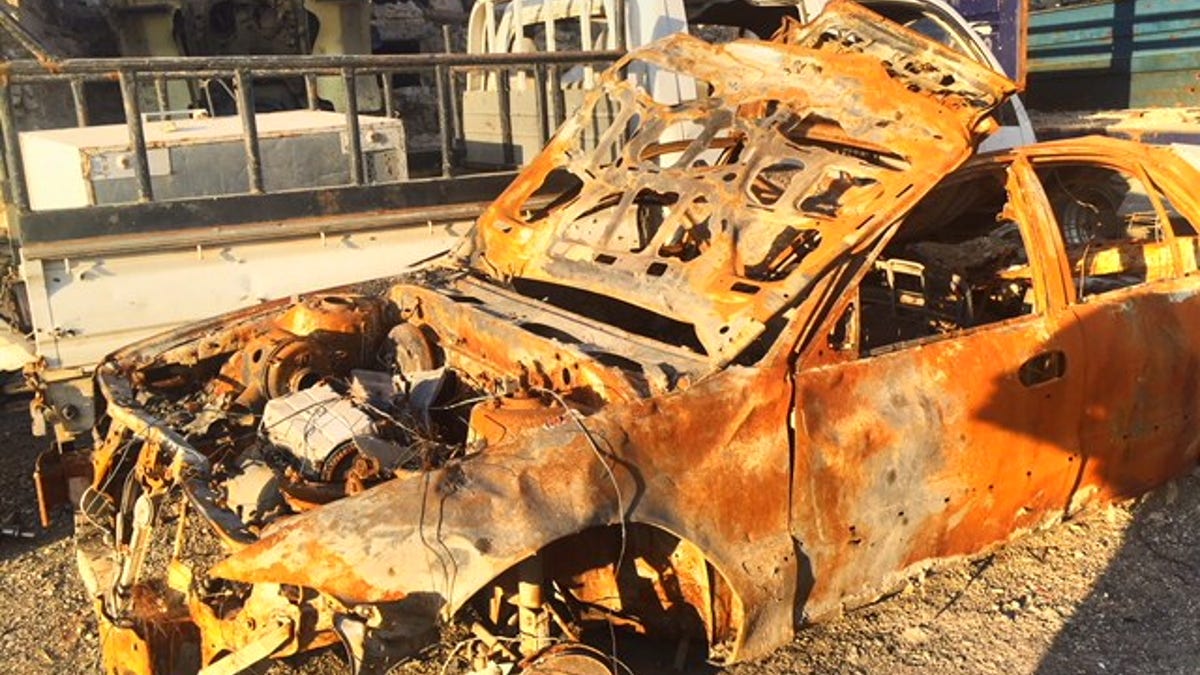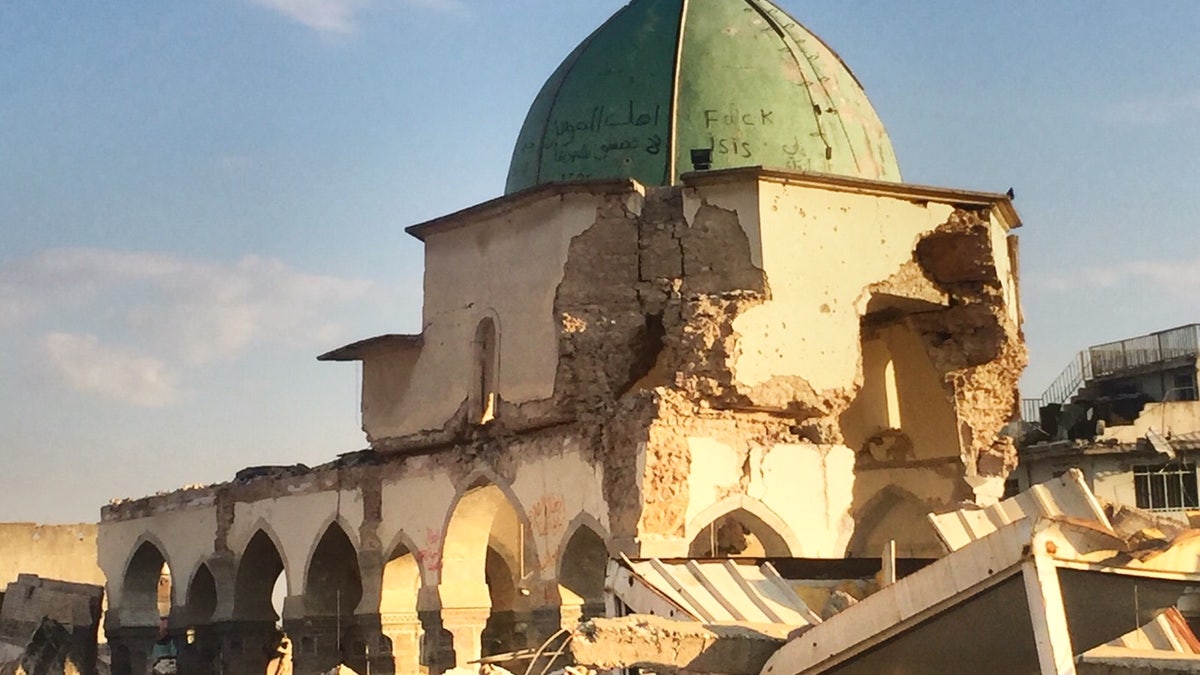Old Mosul City: Fox News' exclusive look at post-ISIS devastation
It’s been four months since Iraqi forces retook Mosul from ISIS militants who held Iraq’s second largest city hostage for nearly three years. Here’s an exclusive look of the “Old City” which weathered the brunt of the fighting. The historic town is now a wasteland littered with shrapnel, shell casings and rotting bodies.
MOSUL, Iraq – “F--- ISIS.”
That’s the message – except with the three missing letters – scrawled across what remains of demolished buildings in the Old City of Mosul, a now-apocalyptic wasteland destroyed by 2 ½ years of ISIS occupation and the battle that led to the city’s liberation.
Dead bodies still rot under the rubble of booby-trapped buildings, Iraqi officials say, and can’t be removed until the area has been sufficiently secured. Shrapnel, grenade launchers and shell casings are everywhere along the once densely populated neighborhood streets. The skeletons of vehicles used in suicide attacks are piled up along closed or bombed-out roads. The palm trees left standing show mostly blackened leaves, wilting in the sun.

Graffiti in Mosul's Old City (Hollie McKay/FoxNews.com)
The "F--- ISIS" graffiti is tagged with an “Emin Ali” pseudonym, a reference to the first imam of Shiite Islam, one of the two major branches of Islam and one that frequently clashes with the other major branch, Sunni Islam. ISIS fighters are largely Sunni Muslims.
Local officials here seem proud of the graffiti. The expletive has even made it to the walls of the decimated Grand al-Nuri mosque, where ISIS leader Abu Bakr al-Baghdadi made his public appearance in 2014 to announce himself the “caliph” of the so-called “Islamic State.”
ISIS fighters bombed their own holy site in June, as Iraqi forces closed in on the city. The front gate of the infamous mosque survived the bombardment, as did the pulpit where Baghdadi once stood.

The remains of a car destroyed by fire (Hollie McKay/FoxNews.com)
Unlike the scene on Mosul’s east side, where the busy streets are packed with traffic, children riding rusty old bicycle and busy roadside markets, life in the Old City is a long way from returning to normal. Fox News was given an exclusive tour of the area by Iraq’s Federal Police, four months after ISIS was driven out by some of the most complex urban fighting in recent history, according to U.S. officials.
In many areas of the Old City, not a single dwelling was spared the devastation.

Wreckage in Mosul's Old City (Hollie McKay/FoxNews.com)
“There was no way to get ISIS out without doing it this way,” one Iraqi police officer told Fox News, explaining that every time they attempted to enter a house, ISIS fighters would slaughter a civilian they were holding as a shield in retaliation.
The Old City is essentially unlivable now, though a few families have trickled back, despite the dangers of unexploded bombs and the absence of water or basic services. Police guard the ghostly streets and workers attempt to sweep out the hazards. Out of nowhere, ceilings still suddenly crash to the ground.
And inside the Federal Police Building, which teeters on the edge of the Old City by the Tigris River, a few young male civilians hoping to return to the city line up. They are almost all amputees, holding each other’s hands as they wait in the freezing cold. Electricity and warm water belonged to a lifetime ago.

Wrecked buildings in Mosul's Old City (Hollie McKay/FoxNews.com)
For some, it’s not even worth the cost.
“The best way forward is to build a new city. Find some more land close by and just start again,” Raghib Kawaji, 57, a retired engineer says as he stares numbly at the guttered store fronts of the local market where he owned three trading businesses. “How can this city ever be what it once was?”




















